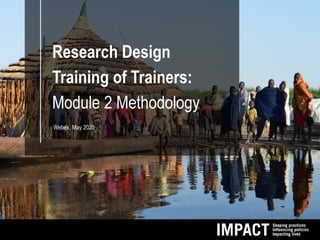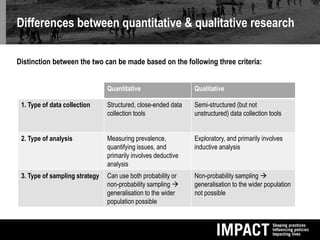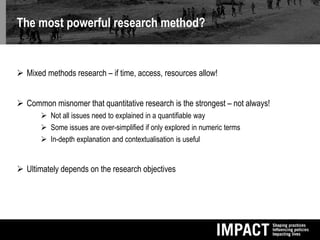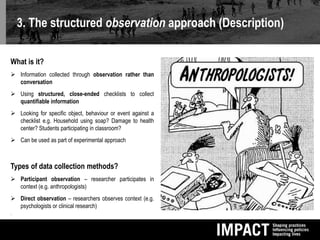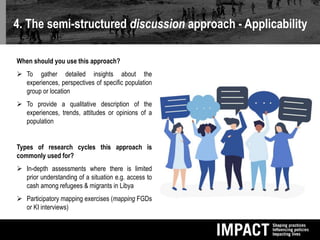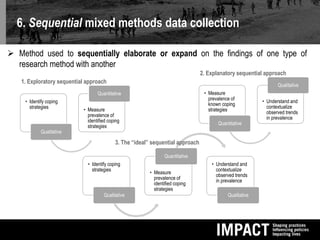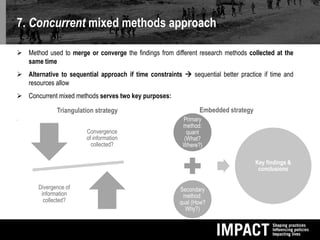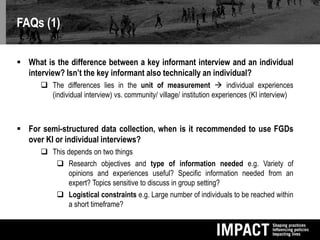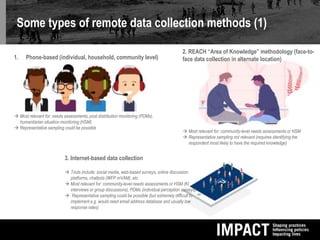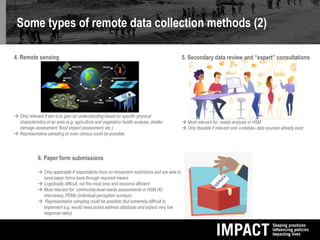This document provides an overview of research design methodology, including different types of research methods, data collection approaches, and frequently asked questions. It discusses quantitative, qualitative, and mixed methods approaches. Specifically, it describes structured surveys, semi-structured discussions, observations, and sequential or concurrent mixed methods. Considerations for selecting a methodology include the research objectives, available time and resources, and required scope and quality of findings. The document aims to help researchers design the overall strategy for data collection and analysis.
